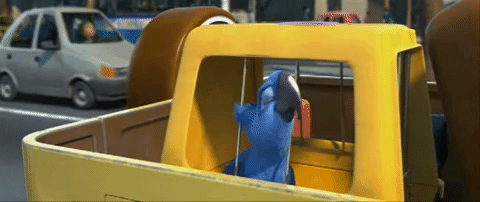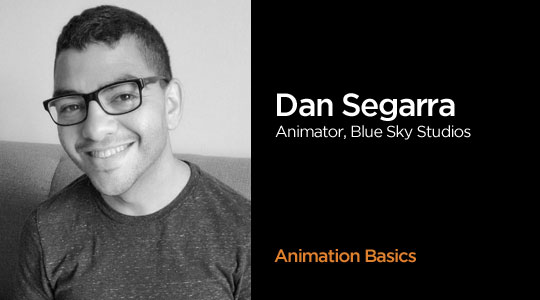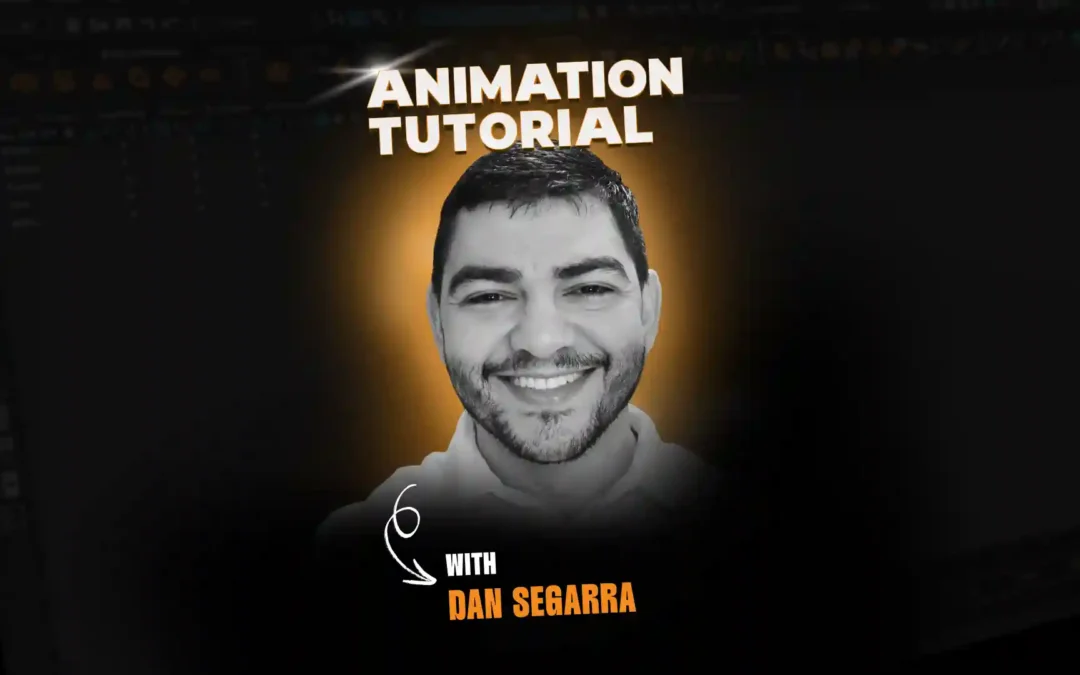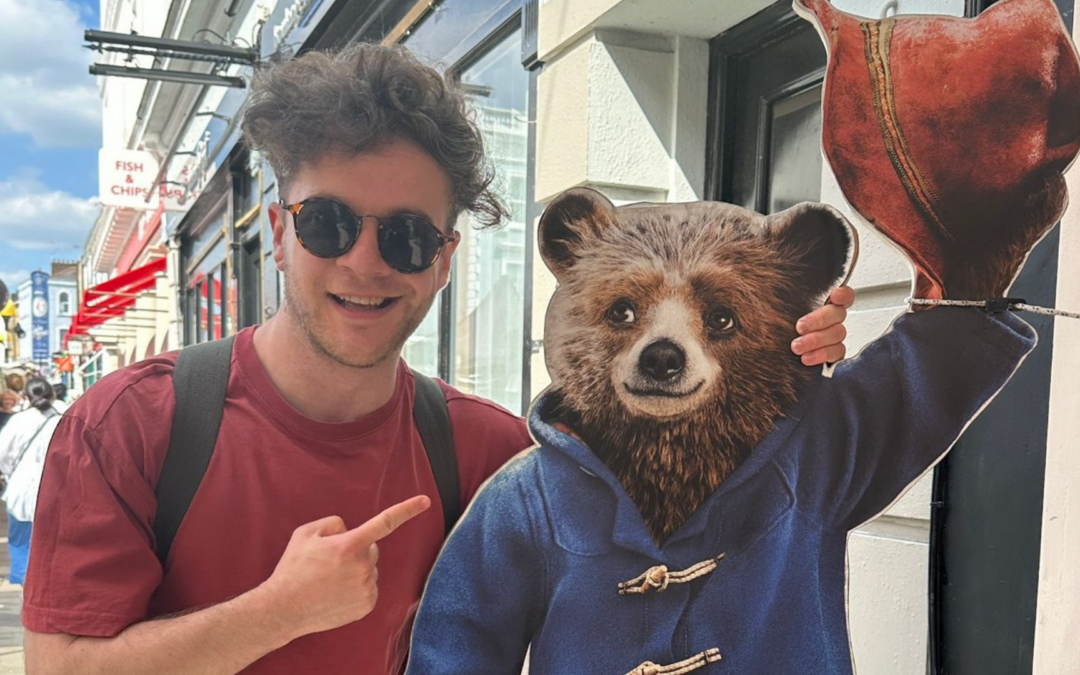
Working at your favorite animation, film, or game studio can be a tough goal to reach. How do you set long-term goals and increase your chances of success? Animation Mentor alumnus and Blue Sky Studios animator Dan Segarra sheds some light on setting animation goals and sticking with them!
Imagine a shiny new car pulls up outside your home. You are so excited and decide you want it to take you somewhere special. So you start the car and begin your drive in a direction you think may lead you to where you want to go. Of course most people wouldn’t just drive a car in a direction without knowing where they were headed, but people seem to do this all the time when they are inspired to start their animation journeys.
If you are inspired to become an animator, here are a few things that have been helpful to me in reaching my goal of becoming a feature film animator.
Map Out Your Destination: Set your sights on where you want to go. Make it clear for yourself. If you want to work on animated films, there’s a level of quality that you have to achieve. I wrote a list years ago that not only plotted out my long-term goals but also what it would take to get there.
There’s a lot of information online on what studios look for in an animator. For example, having a solid grasp of weight and the mechanics of how humans and animals move is very important. If you cannot show this in your animation, what steps will you take in order to apply it?
With all of the information you find, make a very conscious effort to learn what you need in order to reach your goal.
Fuel Your Drive: There are many parts to a car that keep it running so it can arrive at its destination, but the part that needs regular attention is the fuel. Just like you wouldn’t drive across the country with an empty tank, you can’t expect to reach your goals without fueling your personal drive on a regular basis.
This is actually fairly easy to do. Since everyone has different motivation, ask yourself what sparked your drive to begin with. Starting with that, you can find other similar sources of inspiration that will have the same effect.
When you know what drives you, this is what you will turn to when you are low on that metaphorical fuel and are considering abandoning your car on the side of the road when it’s no longer shiny and new. If your destination literally takes years, which mine did, you want to continually remember what it was that ignited your passion in the first place.
Make Pit Stops: Set shorter goals that would lead to your long-term goal. Even if it means taking a position you may not want. I’ve heard multiple times about artists/animators that worked in the mailroom, the kitchen, or as a render wrangler. I started out as a temporary freelance artist inking animation for 2D cereal commercials. It’s not quite what I wanted to do but eventually I did CG animation for that same company that ended up offering me a staff position.
My end goal of working in film was always my focus, but I never passed an opportunity to work at a studio where I could grow from other talented artists around me. I hate to call them “pit stops” because they were very important in helping me become a better artist, but I also looked at them as stepping stones that would lead me to the destination I desired.
Carpool: Something that has helped me grow throughout my career was surrounding myself with others who shared common goals. I learned from people who were better than me and continually grew because of it.
I’ve read that many successful people were surrounded by and learned from influential figures in their industry. Steve Jobs for example worked for Bill Hewlett of Hewlett Packard and was friends with electronics whiz Steve Wozniak. Tony Robbins was mentored by prominent motivational speaker, Jim Rohn. Glen Keane of course was influenced by his artistic father, Bil Keane.
It’s easy to think that the road to success is a lonely road because it’s such a personal decision for the individual, but I wouldn’t have been able to come as far as I have without the help of others who brought the best out of me throughout my career.
Check the Odometer: It’s very easy to look at setbacks and feel like you want to give up. I had many people try to convince me to stop and focus on a different path throughout my life. Keep a tab on your progress throughout your journey. How much have you improved? Tracking how I advanced through the years gave me insight as to whether the effort I put was worth continuing on for me.
When feeling a bit tired at the distance, look at your progress and your improvements and see how far you have travelled. If your improvements have shown to increase, then take a second to appreciate your efforts and get back on the road. If you haven’t improved much, map that destination out again. Maybe take a different route to the same destination. There are many classes online, many schools, and many resources available. Try some different approaches to studying, understanding, and applying what you’ve learned.
Something I try to tell my students each term is that failure doesn’t mean that you’ve lost and that it’s time to give up. It’s really not a winning or losing matter. That’s why I’ve chosen to compare setting goals to reaching a destination. Every individual decides if it’s ever time to stop driving toward that goal. If you aren’t progressing you can always remap your destination. More often than not, the road is very difficult and takes a large amount of energy to achieve. So keep track of your progress and decide, how long are you willing to travel (potholes, traffic, bad weather, failures and all) in order to reach your destination?
Enjoy the Ride: Don’t take your journey for granted. If you enjoy animating and this is what you want to do, find a route that will help you improve and progress so you can get to your destination. In my opinion there’s something important in doing what you love so don’t lose sight of your passion.

Practical Ways To Follow Through

1. Stop Comparing and Start Improving
Comparing your work to another animator’s is something that can demotivate someone pretty quickly. It’s great to see what others are doing to help you get better, but don’t lose focus on your own goals and progress. Everyone learns at a different rate and is at a different stage in their journey.
2. Study and Apply
Analyze animation that inspires you. What makes it great? Study and figure out why it’s so appealing. Is it the timing, posing, staging, etc? Apply what you discover into your own work.
3. Find a Mentor (or Take Classes)
If you don’t have someone around that can help show you your weaknesses and build up your strengths, pay to have someone give you tried and true methods that will help you improve.
4. Practice!
Practice conscientiously with a purpose to improve. You can’t become a better animator simply by knowing the concepts. Your understanding of the concepts has to come out in your work, so keep practicing and applying what you know. It is a constant process that doesn’t happen overnight.
Here are more posts you might like!
6 Key Skills to Succeed as an Animator by Bobby Beck
From School to Studio: Sir Wade Neistadt’s Journey to DreamWorks Animation
How I Got My Dream Job: A Q&A with Alumnus and Framestore Animator Usman Olomu

Want to learn from professional animators like Dan?
Start your animation journey by learning with professional animators from a variety of studios and career paths! Get more information about Animation Mentor’s Character Animation Courses.



